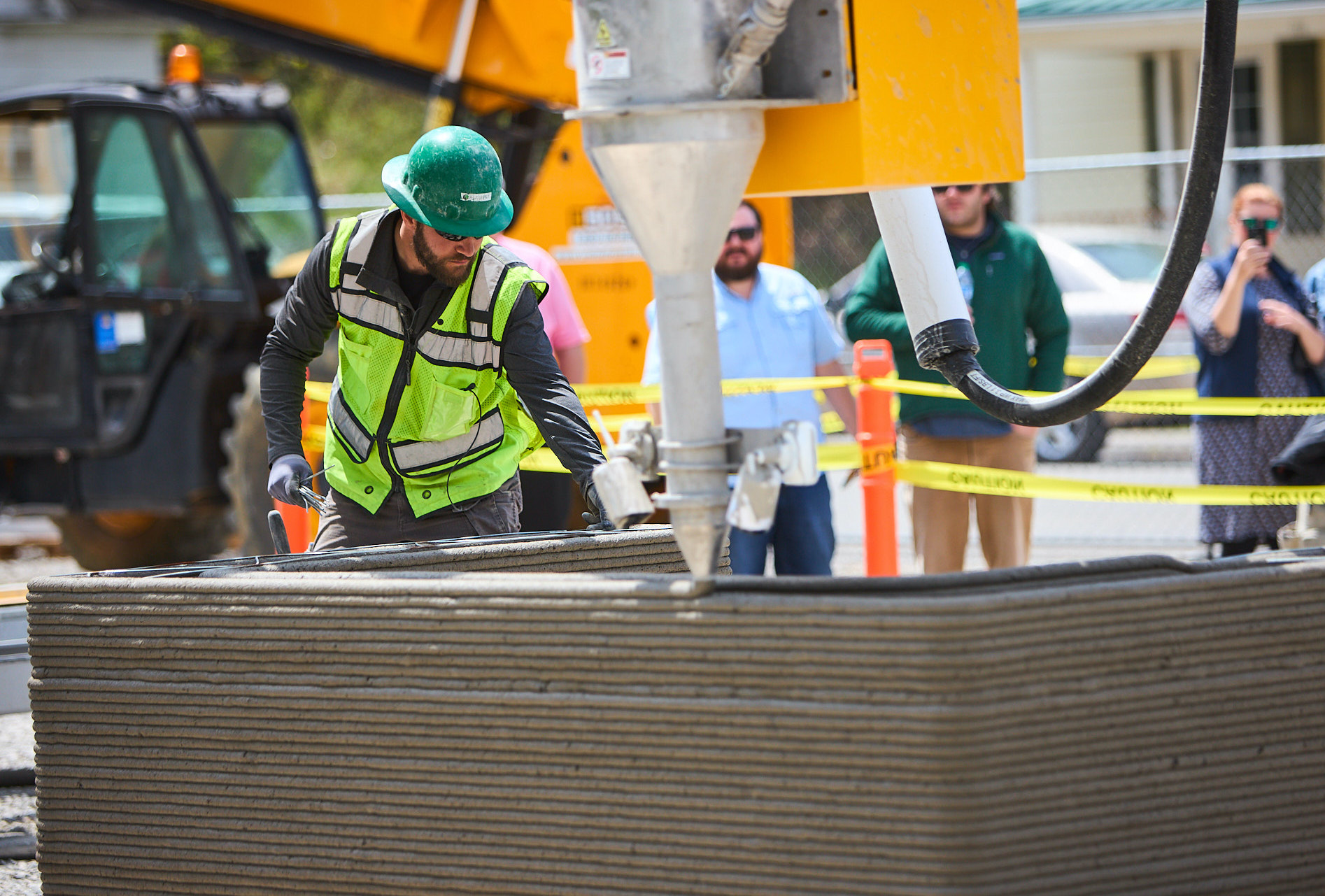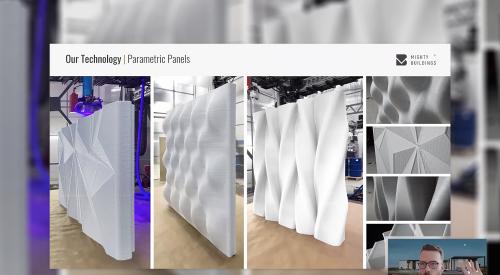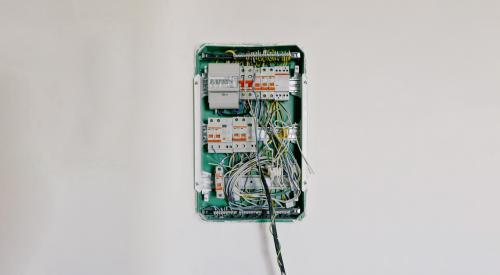3D Construction Printing (3DCP) has become a hot topic as of late. With massive building projects being announced and constant innovations being made in design and material, the industry is armed for growth.
Many 3DCP companies came together at the first ever 3D Printed Housing Conference, which aimed to answer all the questions that people have about the practice.
Companies like Black Buffalo 3D, Alquist, and more discussed the innovations of 3D construction printing, as well as some of the biggest issues that come with the new technology.
3D CONSTRUCTION PRINTING PROS AND CONS
Here are five of the most common barriers to entry for 3D construction printing.
1. High upfront capital investment needed to attain a printer
Black Buffalo (BB3D) admits that their $800,000 printers are far from inexpensive.
One solution is financing. Black Buffalo has created BB3D Financial, a pay-as-you-print rental service that comes with expert training. Short term rentals ranging from 12–72 weeks come with a clearly defined budget—$30k per month—and partial credit if a builder wishes to purchase the printer during their rental.
BB3D’s long-term financing options are akin to buying a car: fixed monthly payments, 24–48 month period, better rates for well-qualified companies, and even consideration for startups.
With options like these, more developers and builders might have an easier time joining the world of 3DCP.
2. Inconsistent materials and testing
Black Buffalo also launched the first 3D Construction Printing Association in 2020. The goal is to bring together 3D construction companies to collaborate on pre-competitive research, code amendments, and education.
BB3D took it upon themselves to invest in getting 3DCP codes updated for the industry. For now, they recommend builders stick to the International Code Council’s AC-509; this is the only criteria for 3D printed walls recognized in over 50 countries.
The company conducted testing of 3D-printed walls following the guidelines, then even rewrote the code for multi-story buildings. ICC accepted and verified the tests, and is expected to release a final approval announcement later this year.
According to Michael Woods, CEO/COO of Black Buffalo, this advancement will mark the first and only global standardized encoded material available for any 3DCP—not just Black Buffalo’s.
Although Black Buffalo machines currently use polypropylene—a recycled plastic—in its construction, the material is not as sustainable as they’d like. According to Woods, BB3D’s material scientists are working on creating load-bearing hempcrete to use as an alternative.
Woods also calls for finding a way to replace its current concrete material with a more “original” form of concrete—containing lime, volcanic ash, and seawater.
Check out this short clip from Black Buffalo 3D's presentation at the 3D Printed Housing Conference:
3. Many manufacturers also compete on some level as developer/contractor
Though Black Buffalo 3D insists they will always solely be a manufacturer of 3D printing machines, not all manufacturers are the same. Some want to try their hand at building 3D printed homes as well.
BB3D believes that by focusing on manufacturing alone, its team is able to focus on making the best printers and materials available, while working with (instead of competing against) its clients.
Zack Mannheimer, founder and CEO of Alquist, urges the need for more companies that focus solely on printing and building homes.
“There needs to be one-hundred companies like ours,” says Mannheimer. “To help with that, we’ve started a licensing program to help get communities, or groups, or nonprofits to start printing.”
4. Difficult to properly price projects and estimate time to recover initial investments
As 3D printed homes currently stand, the savings aren’t that significant. Mannheimer has found that they only save 5-10% today (though he hopes that number becomes 30% in the next two to three years).
That doesn’t mean that there’s no initial savings, however. A Virginia Tech study found that 3D printed homes use 50% less energy than stick-built ones. On-site waste is also reduced by up to 80%.
Something that will drop the cost of 3D printed homes is experience, according to Mannheimer. By building homes at scale and hiring/training more people in 3DCP, he believes the industry can drop the cost in 24 months.
In Alquist’s recently announced 200-home project in Virginia, each home built is estimated to cost $250,000–$350,000. Alquist’s CEO believes that through experience and technological improvements, that number can drop before the project is over.
“We’d love these homes to be less than $200,000—I don’t know how practical that is today,” says Mannheimer. “But we’re working towards making homes that are as affordable as possible.”
Check out this short clip from Alquist 3D's presentation at the 3D Printed Housing Conference:
5. Limited trained workforce
Though one of the advantages to 3DCP is that it can be done without advanced skilled labor, construction workers still need proper education on the new technology.
“Some of our top operators came as interns,” says Peter Cooperman, head of marketing & strategy at Black Buffalo. “It’s amazing to see the transition—within a month they’re running the NexCon printer.”
Education of 3DCP is an important factor for many of these companies. In fact, Alquist has expressed plans to launch a training program in partnership with Virginia Tech.
The curriculum created by Alquist will include an 8-week certificate program in 3DCP—offered to community colleges and high schools in all of the regions Alquist is printing.
As of now, Alquist is actively working on projects in five states—Iowa, Florida, North Carolina, Oregon, and Virginia—with several more in discussion. The company has received interest from every state in the nation, as well as 12 other countries around the world.
“It really illustrates how bad the need is,” says Mannheimer. “There’s a lot of time and learning that has to be spent first, but we’ll get there.”
To get access to the full clips from the conference, click here to watch them for free.
Read more from the 3D Printed Housing Conference:
- Robots and Prefabs and Printing, Oh My!
- What Else Could We Print Houses Out Of?
- Could University Partnerships Advance 3D Construction Printing Further?















